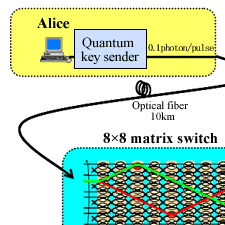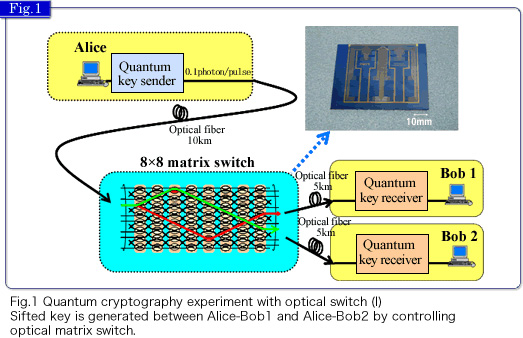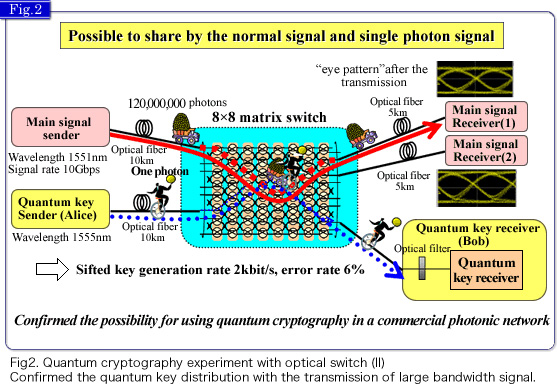Success in distributing single photons for quantum cryptography via an optical switch
- Application of single photon interference phenomena that had annoyed Prof. Einstein -

NTT has successfully demonstrated the quantum cryptography with a single photon, whose state is so fragile against the attacks from the eavesdroppers, can be realized in the photonic network of optical fibers. This result was enabled by combining the original protocol of the quantum cryptography developed by the collaboration of NTT and Stanford University (USA) and the NTT developed optical switch to control the flow of photons. The quantum cryptography is expected to be the last resort of the cryptography protocol, and to enhance enormously the safety of the transmitting information.
Quantum cryptography is assumed as a next generation cryptographic system that may replace the public-key protocol. This technology utilizes the property that the quantum state is very delicate to the external environment and is destroyed by observing it. Namely, the transmitted secret key encoded in the quantum state, single photon, is destroyed when the eavesdropper observed it. Since the eavesdropper cannot resend the quantum state that is identical to the original one, the receiver can easily detect if the secret key had been stolen. However, the quantum cryptography is required that the very weak signal of single photon and strong light signal currently used in photonic network can transmit in the same network. Moreover, when it is transmitted via a switchboard, the optical signal should not be transferred to the electric signal since the quantum state is destroyed at the moment of transfer. Therefore, the signal path should be controlled without transferred into the electric signal.
In order to achieve these conditions, an 8x8 matrix PLC optical switch developed by NTT was used. First, we confirmed that by changing the switch condition the optical path of quantum cryptography was controllable (Fig. 1). Next, we sent a weak signal of quantum cryptography together with large bandwidth data transmissions on strong lights. Though the two lights cross in the matrix switch, we could send them simultaneously and independently (Fig. 2). With these results, we verified the possibility for sending a weak signal for QKD in a commercial photonic network.
=> Press Release
=> Quantum Optical State Control Research Group












